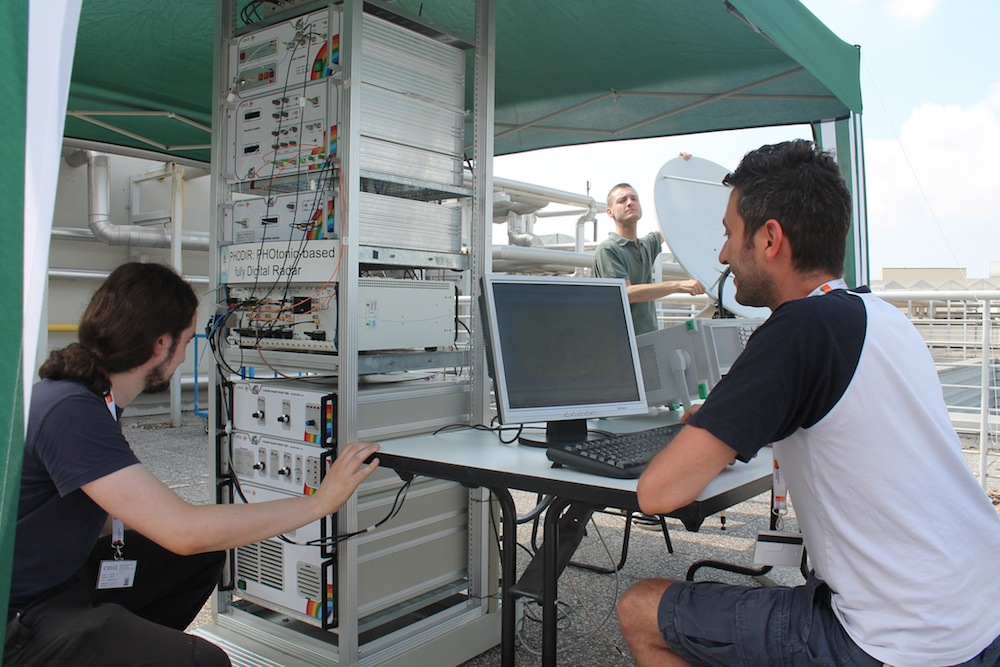
A new system that uses light to transmit radar signals, rather than electronic devices, could be deployed to better track airplanes in the sky, new research suggests.
Researchers could one day use this technology to develop a way to simultaneously transmit a plane's location data, as well as video or other data from the cockpit, to reveal the big picture of what's going on with the plane in real time, according to the paper published today (March 19) in the journal Nature.
"That could be something like a second black box, instead of just recording from a black box that is inside the airplane," said study co-author Paolo Ghelfi, a photonics researcher at the National Interuniversity Consortium for Telecommunication (CNIT) in Pisa, Italy.
Still, there's no way to know whether such technology would have helped track the Malaysian Airlines Flight MH370, which mysteriously disappeared on March 8, Ghelfi said. [What Happened to Malaysia Flight MH370? Five Likeliest Possibilities]
Radar systems
Current radar systems work by sending out radio-frequency (RF) signals produced by electronic components. They then measure the reflected wave that bounces off a target, to determine where it's located and how fast it's going.
But these technologies have limited precision in tracking a target's distance or speed. That's because more precision requires using signals of a higher frequency (the rate at which the electromagnetic wave oscillates). But at higher frequencies, the electronic components of radar systems send and receive signals that are increasingly noisy, or uncertain.
Get the world’s most fascinating discoveries delivered straight to your inbox.
To improve radar systems, Ghelfi and his colleagues devised a method that uses a laser to send out the radar signals, and then processes the return signal using photonic, or light-based, components that convert the signal to a digital waveform.
Light-based system
Because the radar signal generated by laser is incredibly stable, it has less noise. That means it could, in theory, more precisely track the location of objects in the sky, or alternatively, sweep a larger physical area to quickly scan for objects, Ghelfi said.
Being able to use higher frequency signals also allows radar systems to use smaller radar antennas, which means they could theoretically be deployed in more locations, he said.
Using photonic components also means the system is more flexible, meaning it can scan or send out signals at many different frequencies. Current radar systems work only for a narrow range of frequencies.
One future application of this would be to send out wireless communications data, such as video from the cockpit, simultaneously with radar location data. Another possibility is to use one single radar system to quickly sweep the sky to detect objects, then home in on any one object with greater precision to find its location.
The new system is just a prototype, and would need refinement to reach that level of sophistication. But in a test the system performed as well as existing systems at tracking airplanes, the researchers found.
Even with stunning technological improvements, it's unlikely the new system would have prevented MH 370 from disappearing from the radar, Ghelfi said.
The perplexing radar data from the plane suggests that someone diverted the aircraft onto one of two paths, with many experts saying the likeliest route took the passenger jet through the remote Indian and Southern oceans.
"I don't know in that part of the Indian Ocean how many radars are there," Ghelfi said, "even if those radars can have a larger coverage area, probably the airplane would have been lost anyways."
Follow Tia Ghose on Twitter and Google+. Follow Live Science @livescience, Facebook & Google+. Original article on Live Science.

Tia is the editor-in-chief (premium) and was formerly managing editor and senior writer for Live Science. Her work has appeared in Scientific American, Wired.com, Science News and other outlets. She holds a master's degree in bioengineering from the University of Washington, a graduate certificate in science writing from UC Santa Cruz and a bachelor's degree in mechanical engineering from the University of Texas at Austin. Tia was part of a team at the Milwaukee Journal Sentinel that published the Empty Cradles series on preterm births, which won multiple awards, including the 2012 Casey Medal for Meritorious Journalism.


